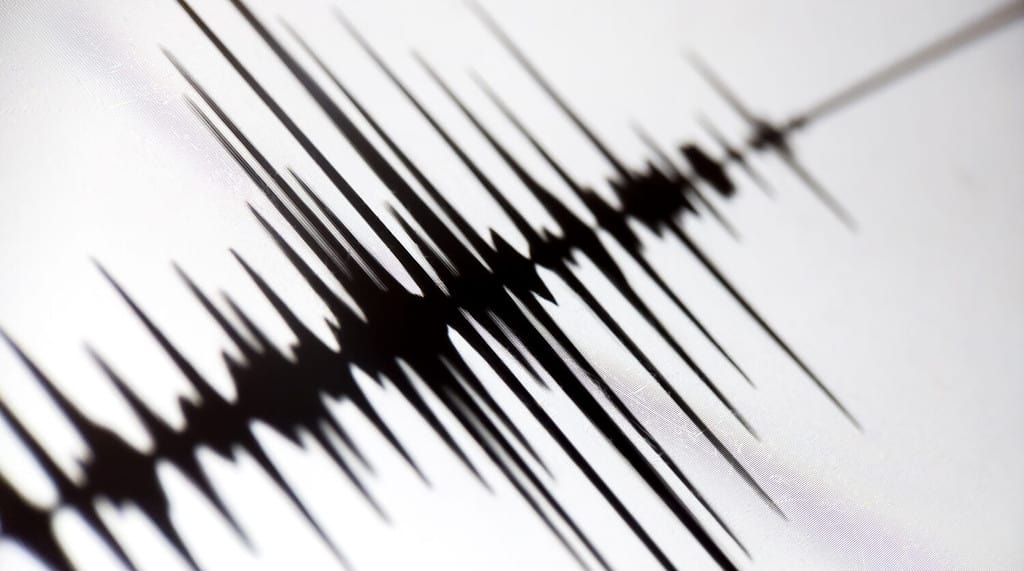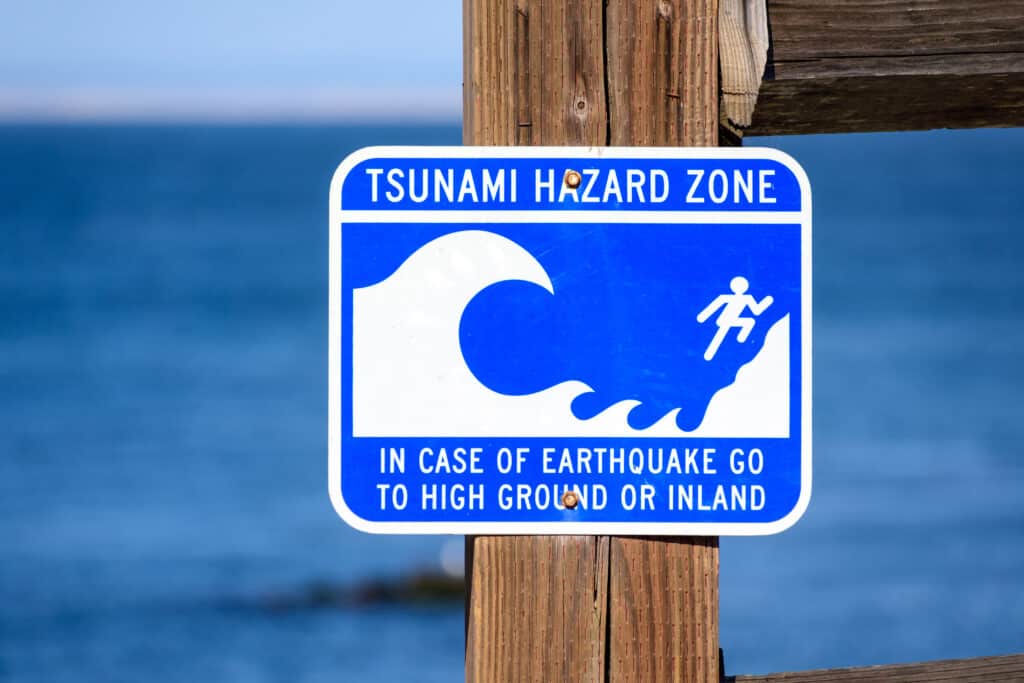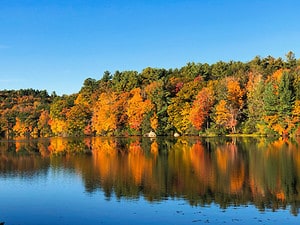Earthquakes are some of the most deadly natural disasters known on Earth but combine a massive earthquake with a massive tsunami, and you have a recipe for destruction on an unprecedented scale. That’s exactly what happened on December 26, 2004, when a magnitude 9.2 earthquake occurred deep under the Indian Ocean off the coast of Sumatra. The tsunami it touched off wreaked mass destruction not only in Indonesia but in countries all around the ocean as far away as Africa. What caused the Indian Ocean earthquake and tsunami, how big was this disaster, what did it cost, and how many lives were tragically lost? These are a few of the questions we’ll answer in this article.

In this image, you can see the undersea tectonic boundary between the Burma Plate and the Indian Plate off the coast of Sumatra, where the earthquake took place.
©Suprun Vitaly/Shutterstock.com
What Caused the Earthquake?
The earthquake is officially known as the Sumatra-Andaman earthquake, but because many British-influenced countries celebrate December 26 as “Boxing Day,” it is also known as the Boxing Day earthquake. The epicenter of the quake was about 100 miles off the west coast of Sumatra 19 miles below sea level at a place where the Indian tectonic plate is sliding under the Burma Plate. A section of the fault line about 1,000 miles long ruptured and uplifted large sections of the seabed by several yards. Seismologists estimate the size of the quake at 9.2 on the Richter scale, the third-largest ever recorded. And it lasted the longest of any quake measured: 8-10 terrifying minutes. To show just how massive it was, look at how it affected the entire planet:
- It caused the Earth to vibrate about .5 of an inch.
- Reverberations through the planet were still being measured a week later.
- It moved the North Pole nearly an inch from its previous location
- It slightly changed the shape of the Earth so that it now rotates faster, making the days 2.68 microseconds shorter.

These are some of the seismic waves recorded from the massive 2004 Indonesian earthquake.
©MuhsinRina/Shutterstock.com
How Big Was the Tsunami?
The result of this sudden movement of the ocean floor was a shock wave traveling through the ocean at hundreds of miles per hour. The nearest countries were hit within 15 minutes, while those across the ocean had up to sixteen hours of warning. As the energy reached the shallow waters near the shore, it piled up a wave of 100 feet high, as tall as a 10-story building, and swept over a mile inland. In South Africa, about 5,300 miles across the ocean, the wave was still 5 feet high. It even reached Antarctica with 3-foot waves. Some of the energy traveled past the islands of Indonesia into the Pacific Ocean, where it produced measurable waves 8-16 inches higher than normal. This video shows what the undersea upthrust may have looked like, and includes actual footage of the tsunami flooding various coastal areas:
How Much Damage Did the Tsunami Do?
Death Toll
The most tragic damage of the tsunami was the death toll. About 227,898 people in 14 countries lost their lives. The most affected countries were Indonesia, Sri Lanka, India, and Thailand. The most distant countries where lives were lost were Somalia, Yemen, Tanzania, Kenya, and South Africa. Some who perished were tourists from around the world staying at Southeast Asian resorts. For example, over 500 Swedish tourists died, mainly in Thailand. Many harrowing stories emerged after the disaster of people who miraculously survived, as well as tragic accounts of friends and relatives who were suddenly swept away, never to be seen again. One dimension of the tragedy that few people realize is that, on average, four times as many women died as men. This is because women often stayed behind to try to get children and relatives to safety; many women in the region cannot swim or climb trees; and on Sundays, many women were in their homes by the coast while the men were away doing things in town.
Financial Cost
The tsunami left about 5 million people injured and 1.7 million homeless. It swept fishing vessels inland, destroyed roads, railroads, bridges, and buildings, and flooded farmland with seawater. Large numbers of livestock were killed. About 60% of Sri Lanka’s entire fishing fleet was destroyed. All of this took years to rebuild. Many people from around the world went to the region to help with recovery efforts, but traditional tourism plummeted in some areas, with the resorts in Phuket, Thailand losing 80% of their business the following year. The direct economic damage of the disaster was estimated at about $10 billion but lost business and the social costs continued for many years afterward making the actual losses incalculable.
Environmental Damage
The tsunami devastated ecosystems at sea and on shore including coral reefs, mangroves, wetlands, and sand dunes. It caused large spills of sewage, industrial chemicals, oil and gas, and dumped vast amounts of wreckage into rivers and the ocean. Salty water poured into wells, polluting groundwater supplies. It took about 18 months for cleaning and filtering methods to get the groundwater to return to normal in treated areas, but in the Maldives, 16 islands were considered to be uninhabitable for years to come. Seawater also left a layer of salt on farmland and mango and banana plantations. The salt sterilizes the land, killing plants and microscopic organisms that are essential to the soil’s productivity. It would take many years for some of these areas to recover their former level of agricultural output.

How Did the World Respond?
About $14 billion in aid was provided by countries from governments and humanitarian organizations all over the world to help with disaster recovery and rebuilding. In the UK, private citizens donated more than the official government funds that were provided, amounting to the equivalent of $10 for each citizen of the country. Thanks to a quick response, the spread of disease and malnutrition after the disaster was minimized. A great deal of energy was put into burying dead bodies in the initial stages of the response. One of the long-term benefits that came out of the tragedy was more attention given to the creation of an early warning system for earthquakes and tsunamis in the region and around the world.
How Can You Help With Disaster Recovery?
Although the 2004 earthquake and tsunami are almost 20 years in the past now, you could still volunteer or donate to help relief and development organizations in any of the affected countries. The Peace Corps, The International Red Cross or Red Crescent, UNICEF, and faith-based organizations are all places you could start. If you’re interested in seeing how the affected areas have recovered and contributing your tourist dollars to the local economy, you could book a tour to Phuket, Thailand or Sumatra, Indonesia. An adventure tour with a company like Wild Sumatra is safely inland and would give you a chance to learn about the culture and unique endangered flora and fauna of the island.
In the event of a similar disaster in the future, anywhere in the world, keep in mind that many people want to go and help in person, but unless you have special skills in search and rescue, emergency medicine, or other vitally needed abilities, you are likely just to be in the way and consuming desperately needed resources. It would be better, in that case, to make a financial donation to an organization equipped to respond to the immediate crisis, then consider whether you have knowledge or skills that could be useful on a personal visit there for later-stage recovery efforts. Religious organizations often specialize in such trips. Some of them have a strictly humanitarian focus and welcome participation by people of all faiths or non-faith.

In the immediate aftermath of a tsunami or other disaster, only people with the most essential disaster recovery and medical skills should enter the disaster area.
©mTaira/Shutterstock.com
What Should You Do in Case of a Tsunami?
If you live in a coastal area or plan to vacation at the beach, anywhere in the world, this topic may have raised some concerns for you. Here are a few tips for tsunami safety you and your family should keep in mind:
- Set up your mobile device to receive emergency alerts.
- Ask the hotel staff for a copy of their tsunami or disaster evacuation plan. If you live in the area and have children, find out this information from their school.
- In advance, identify the fastest evacuation route, by car or on foot.
- During a warning, get away from beaches and rivers. A tsunami can wash rapidly up a river.
- If you feel an earthquake, or if you see water rapidly draining away from the beach out to sea, immediately evacuate without waiting for further instructions.
- Evacuate inland, to high ground, or the highest floors of the tallest building you can reach.
- There may be aftershocks and tsunamis may come in several waves. The biggest one is not always the first one. Remain on high ground as long as possible.
- Because of the danger of aftershocks, you may want to cut your vacation short and get to a safer inland location.
- If you must return to a disaster-stricken area, be alert for falling debris, live electrical wires, gas leaks, and sharp rubble on the ground.
- Contact your family and post to social media to let everyone know you are ok.

In some countries, signs like this identify areas at high risk of tsunamis.
©Michael Vi/Shutterstock.com
Honoring Those We Lost
The 2004 tsunami was a terrible tragedy. Hopefully, as a result of it, we have learned to work together and help one another a little bit better, develop better early warning systems, and protect ourselves and our loved ones when in an area of higher risk. If so, then the irreplaceable losses of human lives that we continue to remember and grieve today will not have been entirely in vain.
The photo featured at the top of this post is © HC FOTOSTUDIO/Shutterstock.com
Thank you for reading! Have some feedback for us? Contact the AZ Animals editorial team.






